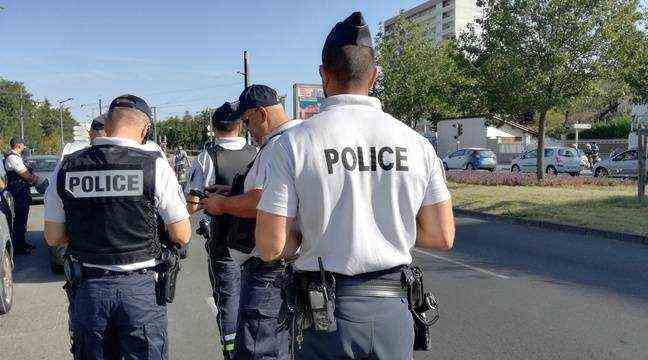Julien, 26, was he badly beaten on Tuesday evening in a suburban train, because he was a police officer? This is what seems to imply the prosecutor’s office of Pontoise who opened Thursday evening a judicial investigation for “attempted murder of a person holding public authority”. The civil servant, who has a broken nose, had just left his service at the Gare du Nord and was returning to his home dressed in civilian clothes, when he was attacked by four men, insulting him as “dirty shit cop” and hitting it.
Two days earlier, it is another file, in Savigny-le-Temple, in Seine-et-Marne, which pushed the Minister of the Interior, Gérald Darmanin, to improvise a trip to the city police station. In the lobby of a building known to be a deal point, police officers discovered a “bonus” table targeting them: 500,000 euros to kill one, 300,000 for a rape …
No official figure
If these two cases are not linked, they reflect the concerns expressed by the profession for several years. “There is no longer any fear of attacking a police officer,” laments Yvan Assioma, national secretary of the Alliance police union. This has been true for a long time in intervention, it is becoming more and more out of service. The phenomenon is nevertheless difficult to quantify: there is no official figure on the number of police officers or gendarmes injured while on duty, since it is necessary each time to establish whether they were targeted because of their profession or for an independent reason. It is therefore impossible to know whether these attacks follow a similar trajectory to those of the attacks on mission: according to figures from the Ministry of the Interior, they increased by 40% between 2009 and 2019, from 26,721 to 37,431.
“What is certain is that since the terrorist attack in Magnanville, the feeling of insecurity has greatly increased within this profession”, assures Christian Mouhanna, sociologist at the CNRS, specialist in issues of violence and security. public. In June 2016, the double murder of this couple of police officers at their home, in front of their 3-year-old son, prompted many officials to change their habits: not to return to uniform, keep their service weapon, regularly change their routes … “It accelerated a mutation which had already started, estimates Yvan Assioma, it’s been a long time since many police officers prefer to keep their profession silent in public, sometimes ask their children to do the same. “
Graffiti and social networks
Is this feeling of insecurity in tune with reality? “It’s very difficult to assess,” says Christian Mouhanna. We are moving towards a society that is less and less violent overall, it is a statistical reality, but much more sensitive to violent acts. Proof of this is the proliferation of investigations opened after the discovery of threatening tags specifically targeting police officers, sometimes accompanied by their address or elements of their private life. If graffiti against the police has always existed, what changes, however, is their degree of precision.
“There is a” social networks “effect, assures the unionist Alliance. The names of the police appear almost always on the procedures, it is enough to do research. Sometimes they manage to ascend by targeting a loved one. In an attempt to limit the phenomenon, the trade unionist calls for the anonymization of officials on the procedures, as is the case in cases of terrorism or organized crime.

